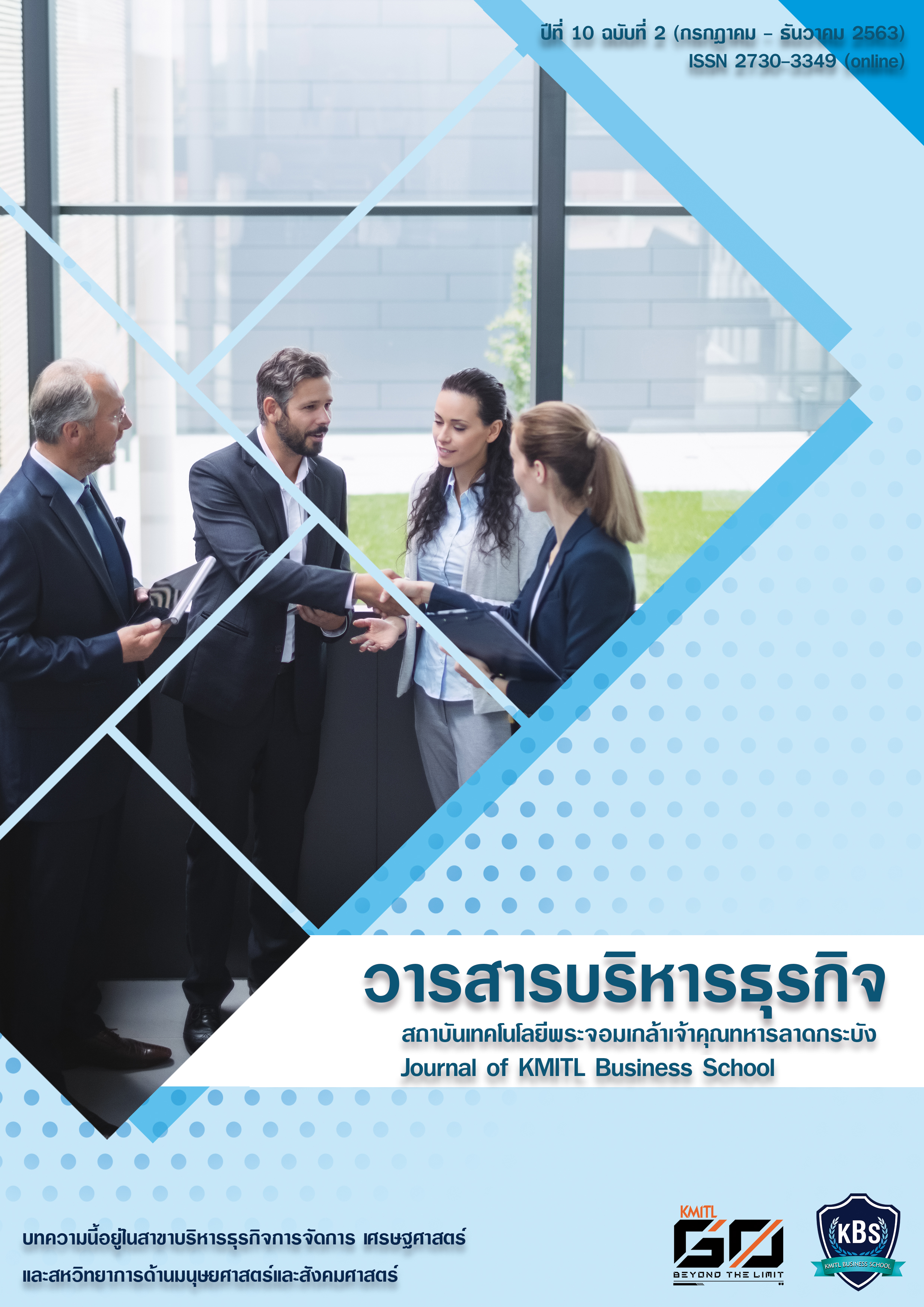Situation and Guidelines tourism for Developing of Deer Farming in Thailand.
Main Article Content
Abstract
This study aimed to 1) study the tourism situation of deer farming in Thailand and 2) study the tourism promotion guidelines of deer farming in Thailand. That a researcher use Mixed Methodology include Quantitative research and qualitative research. The sample consisted of 12 deer farming operators. For the quantitative research, the research tool was a questionnaire. The data was analyzed by percentage, mean, standard deviation and qualitative research collecting by in-depth interview with content analysis. The results showed that the situation of deer farming in Thailand had a moderate level of tourism management potential. The guidelines for promoting tourism should be integrated with government agencies, the private sector and educational institutions and entrepreneurs. In transferring knowledge in tourism administration and management Including support for the budget and jointly formulate a plan for the development of deer farming to be able to develop a deer farming for tourism. And entrepreneurs should aim to develop tourism to be a learning center for tourists by promoting farms as a source of career building for the community in order to promote sustainable tourism.
Article Details
Journal of KMITL Business School is available both online and in printed version.
**All articles or opinions presented in this issue of the Journal of KMITL Business School reflect the thoughts of their respective authors. This journal serves as an independent platform for a variety of viewpoints. Authors bear full responsibility for the content of their articles.**
**All articles published in this journal are copyrighted by KMITL Business School, King Mongkut's Institute of Technology Ladkrabang. The editorial team permits copying or using articles, but a reference to the journal is required.**
References
กรมส่งเสริมอุตสาหกรรม. (2563). การวิเคราะห์ Five Force. สืบค้นจาก https://bsc.dip.go.th/th/category/sale-marketing/sm-5forcesanalysis
กัลยา วานิชย์บัญชา. (2550). การวิเคราะห์สถิติ: สถิติสำหรับบริหารและวิจัย พิมพ์ครั้งที่ 10. กรุงเทพฯ: โรงพิมพ์จุฬาลงกรณ์มหาวิทยาลัย.
การท่องเที่ยวแห่งประเทศไทย. (2555). สรุปผลงานวิจัยโครงการศึกษาสถานการณ์และโอกาสการส่งเสริมตลาด
การท่องเที่ยวกลุ่ม Eco & Adventure. สืบค้นจาก https://etatjournal.files.wordpress.com/2012/11/eco-adventure-tourism.pdf
เดือนเพ็ญ คำพวง, ศุภพร ไทยภักดี, และพันธ์จิตต์ สีเหนี่ยง. (2559). กลยุทธ์ในการพัฒนาพื้นที่เกษตรเพื่อส่งเสริมให้เป็นแหล่งท่องเที่ยวเชิงเกษตร ในอำเภอปากช่อง จังหวัดนครราชสีมา. การประชุมวิชาการระดับชาติ ครั้งที่ 13, มหาวิทยาลัยเกษตรศาสตร์ วิทยาเขตกำแพงแสน, นครปฐม.
ธัญญลักษณ์ ศิริวรรณางกูล (2555) แนวทางการส่งเสริมการท่องเที่ยวแบบฟาร์มสเตย์ จังหวัดสระบุรี. (วิทยานิพนธ์ปริญญามหาบัณฑิต) มหาวิทยาลัยธุรกิจบัณฑิตย์, กรุงเทพมหานคร.
บุญฑวรรณ วิงวอน. (2556). การเป็นผู้ประกอบการยุคโลกาภิวัตน์. กรุงเทพฯ: จุฬาลงกรณ์มหาวิทยาลัย.
พัชรินทร์ คำแปง. (2546). การเกษตรเพื่อวิถีชีวิตที่ยั่งยืนในความหมายและเงื่อนไขที่หลากหลายของเกษตรกร: กรณีศึกษาสมาชิกกลุ่มเกษตรอินทรีย์ ตำบลแม่ทา กิ่งอำเภอแม่ออน จังหวัดเชียงใหม่. (วิทยานิพนธ์ปริญญาศิลปศาสตร์มหาบัณฑิต). มหาวิทยาลัยเชียงใหม่, เชียงใหม่.
พัชรีรัต หารไชย. (2552). การประเมินศักยภาพด้านการท่องเที่ยวจังหวัดศรีสะเกษเพื่อการกำหนดแนวนโยบายการท่องเที่ยวอย่างยั่งยืนระดับจังหวัด. (วิทยานิพนธ์ปริญญามหาบัณฑิต). มหาวิทยาลัยสถาบันเทคโนโลยีพระจอมเกล้าเจ้าคุณทหารลาดกระบัง, กรุงเทพมหานคร.
รุ่งรดิศ เมืองลือ. (2560). แนวทางการพัฒนาการท่องเที่ยวชายฝั่งทะเลตะวันออกอย่างยั่งยืนในจังหวัดชลบุรี. วารสารวิทยาลัยดุสิตธานี, 11, 31-57.
สมคิด บางโม. (2552). องค์การและการจัดการ. กรุงเทพฯ: วิทยพัฒน์.
สุภาพร คำภีระ. (2551). การศึกษาแนวทางการพัฒนาแหล่งท่องเที่ยวเชิงนิเวศและประวัติศาสตร์ หมู่บ้านสันติสุข ขององค์การบริหารส่วนตำบลขุนควร อำเภอปง จังหวัดพะเยา. (วิทยานิพนธ์ปริญญามหาบัณฑิต) มหาวิทยาลัยราชภัฏเชียงราย, เชียงราย.
สำนักงานพัฒนาเศรษฐกิจจากฐานชีวภาพ. (2555). คู่มือธุรกิจกวาง. กรุงเทพฯ: บริษัท เอ็นบีบีกรุ๊ป จำกัด.
สำนักงานส่งเสริมวิสาหกิจขนาดกลางและขนาดย่อม. (2555). แผนการส่งเสริมวิสาหกิจขนาดกลางและขนาดย่อมรายสาขาอุตสาหกรรมการท่องเที่ยว. สืบค้นจาก https://issuu.com/kkkoykoy/docs/group154_6581_
20140109165751
อรวรรณ เกิดจันทร์. (2557). การมีส่วนร่วมของชุมชนท้องถิ่นในการจัดการการท่องเที่ยวเชิงนิเวศป่าชายเลนคลองโคน จังหวัดสมุทรสงคราม. (วิทยานิพนธ์ปริญญามหาบัณฑิต). มหาวิทยาลัยธุรกิจบัณฑิตย์, กรุงเทพมหานคร.
Armstrong, M. (1996). A Handbook of Personnel Management Practice. London: Kogan Page.
Bartol, K. M., & Martin, D. C. (1994). Management. 2nd ed. New York: McGraw-Hill, Inc.
Fehr, E., & Falk, A. (1999). Wage rigidity in a competitive incomplete contract market. Journal of Political Economy, 107(1), 106-134.
Goeldner, C. R., & Ritchie, J. R. B. (2006). Tourism: Principles, Practices, Philosophies 10th ed. New Jersey: John Wiley & Sons, Inc.
Hutanuwat Nuntiya. (2002). Strategic Planning for Community Business (SWOT Analysis). Ubonratchathani: Ubonratchathani Press.
Lovelock, C. H. (1996). Service marketing. Upper Saddle River, New Jersey: Prentice Hall.
Paresh, V. J., & Milind, B. B. (2012) Agro-Tourism A Specialized Rural Tourism: Innovative Product of Rural Market. International Journal of Business and Management Tomorrow, 2(1), 1-12
Potter, M. E. (1980). Competitive strategy: techniques for analyzing industries and competitors. New York: The Free Press.
Ratthanan Pongwiritthon. (2015). Development Guidelines for Sustainable Agro-Tourism: Pang Da Royal Project. Suranaree Journal of Social Science, 9(1), 19-35.
UNWTO. (1997). Tourism 2020 Vision. Madrid: UNWTO.


